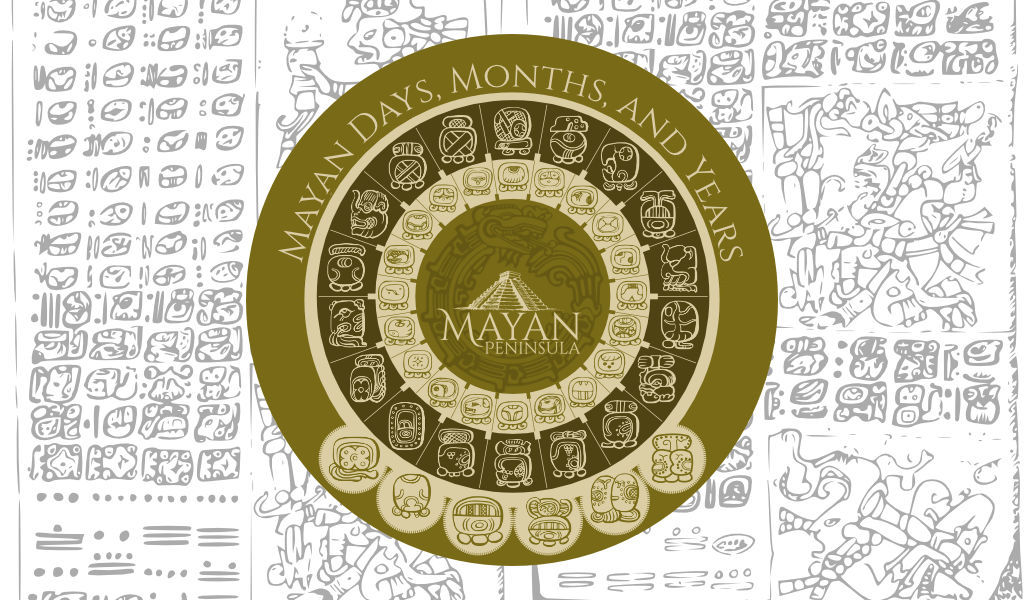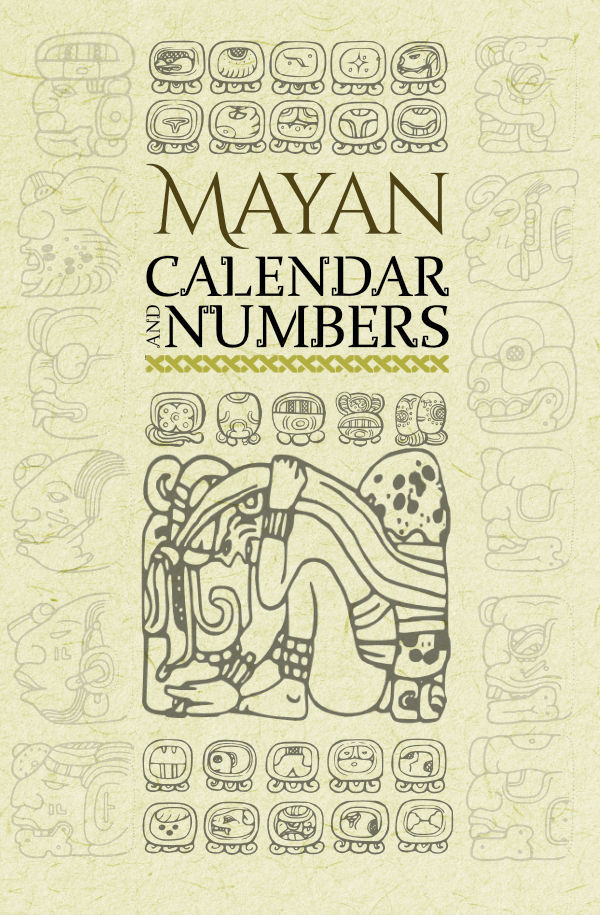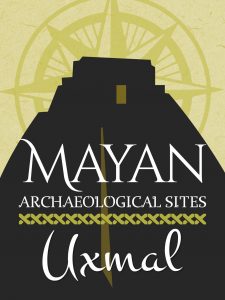The Mayan Calendar is divided into a broad calendar system composed of a set of different cycles that are intertwined with each other. Each has its own ritual, astronomical, agricultural or other purposes.
The ancient Maya had a fascination with the cycles of time and were great observers of the sky, using their knowledge of astronomy and mathematics, they managed to develop one of the most accurate calendar systems in human history.
The most commonly known Mayan cyclic calendars are Haab and Tzolkin. In addition to these, the Maya also developed the Long Count calendar to chronologically date mythical and historical events.
The 13 baktun cycle of the Mayan long-account calendar is 1,872,000 days or 5,125.366 years long. This is one of the longest cycles found in the Mayan calendar system.
Main types of Mayan Calendar
Tzolkin calendar
SACRED CALENDAR OF 260 DAYS
The 260-day Tzolkin Calendar, also known as the sacred calendar, is the oldest known calendar cycle in Mesoamerica, dating back at least 600 BCE. While some academics are still looking for an astronomical basis for this cycle, most agree that it was based on the nine-month gestation period. As a testimony of the centrality of Tzolkin in Mayan culture, it’s still observed today among traditional Mayan groups.
The Tzolkin Calendar count
The Tzolkin Calendar count involves 13 numbers matched with 20-day names. Since 20 is not divisible by 13, the two sequences are out of date with each other and are represented by gears. A day like 4 Lamat will not be repeated until all numbers and names have gone through a full 260-day cycle. Therefore, there is a unique day name for each of the 260 days, without weeks or months.
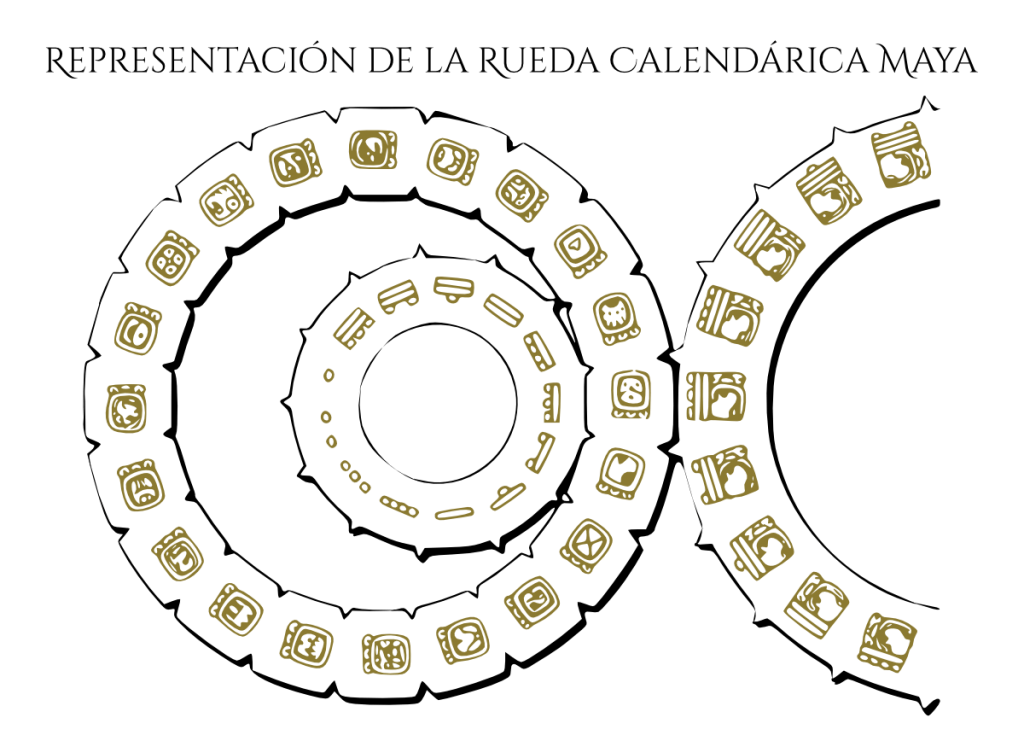
Note: It’s worth mentioning that this famous representation of the gears was NOT used by the Maya, it’s only used to understand how the days were interspersed.
Correlation of the Tzolkin Calendar with other Mesoamerican calendars
Regardless of the Mesoamerican culture observed, the 260-day calendar consists of 20 symbols, each counted 13 times in the cycle. For the Maya, this calendar was called Tzolkin, for the Aztecs the Tonalpohualli and for the Zapotecs the Piye.
Each culture had its own versions of these symbols and expressed the names of the days in their own languages, but in all of them, there is an almost one-to-one correlation at the basic level.
Given that Mesoamerican cultures are geographically and chronologically different, the fact that their 20-day symbols are so similar suggests a very old origin, which was probably from the days of the first Olmecs.
The Haab Calendar
365 DAY SOLAR CYCLE
The Haab is the most similar to the calendar we use today with 365 days in its count that’s based on solar observations. This calendar, according to experts, is estimated to be used for the first time around the winter solstice of 550 BCE and was created to be used in conjunction with the Tzolkin.
When used together, the Haab and Tzolkin Calendar create a larger 52-year cycle called the Round Calendar that was used not only by the Maya but also by the rest of the Mesoamerican cultures.
The Kin

The Kin is the equivalent to the days of the month, but instead of 30 or 31 days, it takes 20 to form a Uinal (Mayan month). Each one has its representation in hieroglyph along with its name that’s not the name of a regular number.
For example, the number 1 in Maya is called “jun” and when we refer to day 1 of the Uinal (month) it’s called “imix”.
Name of the days of the Uinal
- Imix
- Ik’
- Ak’bal
- K’an
- Chikchan
- Kimi
- Manik
- Lamat
- Muluk
- Ok
- Chuen
- Eb
- Ben
- Ix
- Men
- K’ib
- Kaban
- Etznab
- Kauak
- Ajau
The Uinal

The Uinal can be seen as the equivalent of our months since they consist of 20 days, but instead of having 12 of them, the Haab Maya calendar has 18 of them. The Uinals apart from counting the time were used to perform certain activities.
Name and meaning of the 18 Uinals
- Pop – Mat (symbol of community and marriage)
- Uo ’- Frog
- Zip – Red
- Sots – Bat
- Tsek – no translation is known
- Xul – Dog
- Yaxkin – first sun (or green)
- Mol – Water or Jade
- Ch’en – Cave or well
- Yax – Green or first
- Sak – White
- Keh – Red (or maybe Deer)
- Mak – To close, to cover
- Kankin – Yellow Sun
- Muan – The moaning bird (owl relative)
- Pax – Planting time
- K’ayab – Turtle
- Kumk’u – Ripe Corn
- Uayeb – Unfortunate or unnamed days
The Uayeb of the Mayan Calendar
The last five days of the Haab cycle are known as the 19th month and it’s called Uayeb. These are unpredictable days, not to plan important events or travel away from home.
It’s frequently claimed that the final 5 days of the Uayeb were considered “unfortunate” by the ancient Maya.
These 5 days, as they were considered days of bad luck, during which nothing significant should be done. Many did not bathe, did not leave their homes, activities were not planned, etc.
On the other side of the coin, some researchers who believe that everything related to the bad side is just speculation and mere superstition.
What’s known with certainty, is that the end of the 365-day calendar year was a time used to observe fasting and sacrifice to the Mayan gods. Therefore, most of the time devoted to activities during the Uayeb were focused on preparing for the new cycle of the Haab calendar. These preparations were fire ceremonies at sunrise and sunset, and sacred ritual purifications.
In other words, the Uayeb was used as a moment to reflect deeply on the current blessings and the anticipation of the new cycle, in other words, the Mayan New Year.
The Uinal as a zodiac sign
Even though a tourist can buy an amulet with his “Mayan month signs” in most archeological sites and souvenir shops as if they were related to the concept like the Greek zodiac signs, the Maya did not assign a meaning similar to a horoscope to these signs.
It’s the 260-day Tzolkin, and not the Haab, that informed an individual of his personality and destiny traits.
The Tun
The Haab consists of 18 Uinals of 20 Kins each, and a final short Uinal of only 5 days. Together they form the 365-year solar year called Tun. As with the Tzolkin, each day is represented by a combination of number and glyph, but the numbers are now 20, one for each day of a 20-day month.
The accuracy of the Haab Calendar
Like all solar calendars of an advanced civilization that has developed one, there are certain basic similarities such as the need to keep track of the seasons for agriculture.
Because the time it takes for our Sun to reappear in exactly the same positions as seen from Earth is a little longer than 365 days (365,2421897 days), periodic adjustments are needed to maintain an accumulation of annual calendar counts in alignment with the Earth revolving around the sun.
The ancient Maya addressed this problem differently than we do today. Instead of adding a leap year every 4 years, they added 13 days every 52 years.
It’s very interesting to know that the Haab calendar has an error of only 1 day in 6729 years, while our “modern” calendar has an error of only 1 day in 3236 years. So the Mayan Calendar was better than our modern calendar.
Other Mayan calendars
The calendar wheel of 52 years.
The long account of 5200 years.
The lunar account of 18 lunar months.
The Venusian account of 584 days.
The Lords of the Night count of 9 days.
Among others.
The Calendar Wheel
The Calendar Wheel is made up of a combination of the Tzolkin Calendar with the Haab Calendar that formed a synchronized cycle that lasts 52 years.
The Long Count
The long count was used to tell when an event occurred related to another Tzolkin and Haab event.
The long account began on 0.0.0.0.0, which has the Mayan name of 4 Ajau and 8 Kumkú. This day has been calculated on August 11 or 13, 3114 BCE in the Gregorian calendar.
The end of the long count
The end of the long account was on December 21, 2012, about 5,125.35 Earth years after the start of this account.
The count of 5,125.35 years equals 5,200 tunes, which are cycles of 365 days, or 1,872,000 days.
The cycles are related to different gods and cosmic events, so the end of the long count this past December 21, 2012, concluded the cycle associated with the moon and from that date began the period known as the sixth sun associated with the Return of Kukulkán.
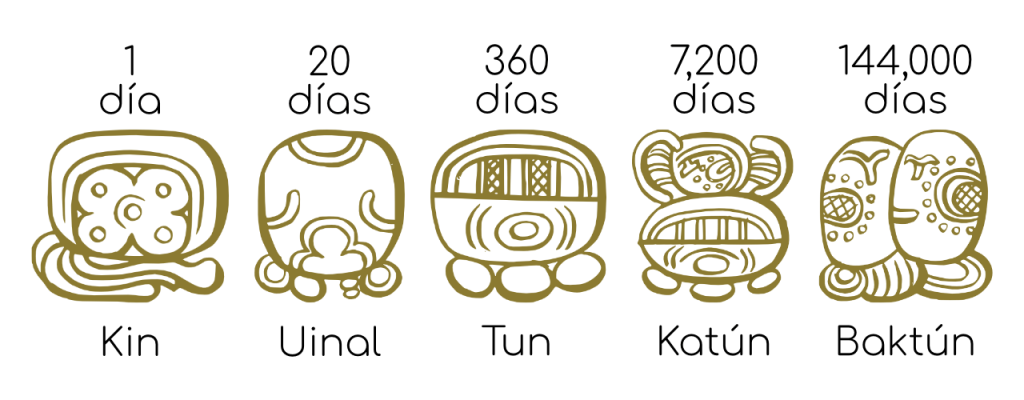
The Long Count is formed by:
| NAME | NUMBER OF DAYS | EQUALS TO |
| Kin | 1 | |
| Uinal | 20 | 20 Kin |
| Tun | 360 | 18 Uinal |
| Katún | 7,200 | 20 Tun |
| Baktún | 144,000 | 20 Katún |
The precession period
By taking five repetitions of the long count, they make up the great cycle of 26,000 tunes equivalent to 25,626.8 years, very close to the period of precession that equals 25,700 Earth years.
The Lunar Calendar
The 18-month lunar count, or 531 days, is the period in which 4 total solar eclipses or 4 total lunar eclipses can occur, four eclipses at regular intervals of 6 lunar months.
Mayan Calendar Date Calculator
Any date in the Gregorian calendar can be converted into a corresponding date in the Mayan calendar system.
A particular day, month, and year can be expressed as a Long Count date using Baktún, Katún, Tun, Uinal and Kin time units along with a Haab and a Tzolkin calendar.
You can use an interactive tool to convert the dates of the Gregorian calendar into the Mayan calendar system.
You can use the calculator from here.
Differences between the Mayan Calendar and the Mexica (or Aztec) Calendar

The Mayan Calendar and the Mexica Calendar are two-time measurement systems that developed in Mesoamerica. Both are based on astronomical and mathematical cycles but have important differences in their structure and operation.
| Mayan Calendar | Mexica Calendar |
| The Mayan Calendar is made up of two main counts: the Long Count and the Tzolkin. The Long Count, as we have already seen, is a series of numbers that indicate the number of days elapsed since a fixed starting point, which is estimated to correspond to August 11, 3114 BCE. The Tzolkin is a 260-day cycle formed by the combination of 20-day names and 13 numbers. Each day has a unique name and number, and repeats every 260 days. The Mexica Calendar is made up of two main accounts: the Xiuhpohualli and the Tonalpohualli. | The Xiuhpohualli is a 365-day cycle divided into 18 months of 20 days each, plus five additional days called Nemontemi. Each month has a name and is associated with a religious holiday. The Tonalpohualli is a 260-day cycle formed by the combination of 20 signs and 13 numbers. Each day has a unique sign and number, and it repeats every 260 days. |
As you can see, they are very similar, but the main difference between the Mayan Calendar and the Mexica Calendar is that the former is linear and the latter is circular.
The Mayan Calendar records time from an origin to an end, while the Mexica Calendar represents time as a succession of cycles that are constantly renewed.
Another difference is that the Mayan Calendar has greater astronomical precision than the Mexica Calendar since it incorporates adjustments to synchronize the solar and lunar cycles.
Finally, a cultural difference is that the Mayan Calendar reflects the worldview of the ancient Maya, who viewed time as a manifestation of divine order, while the Mexica Calendar reflects the worldview of the Mexica, who viewed time as a dynamic force. and conflictive.

